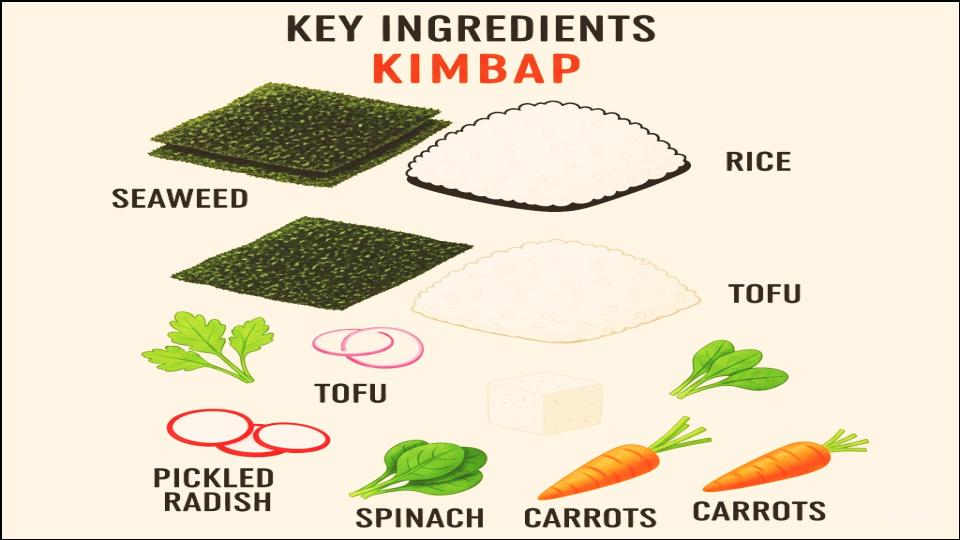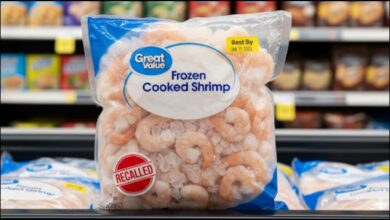A frozen seaweed rice roll from the grocery chain Trader Joe’s has become a viral sensation across the United States, driven by a surge of social media attention that has led to widespread product shortages and purchase limits. The immense popularity of the Trader Joe’s Kimbap highlights a growing American appetite for convenient Korean food and underscores the power of online trends to disrupt retail supply chains.
The Rise of a Frozen Food Star
In August 2023, Trader Joe’s, a popular U.S. grocery chain known for its private-label products, introduced a new item to its freezer section: Kimbap, a Korean dish made of cooked rice, vegetables, and other ingredients rolled in dried seaweed (gim). Priced at an accessible $3.99, the product quickly sold out in stores nationwide, leaving many customers empty-handed and fueling a wave of online discussion.
Kimbap, often referred to as a Korean sushi roll, is a staple of Korean cuisine. Unlike Japanese sushi, which is typically seasoned with vinegar and features raw fish, kimbap rice is seasoned with sesame oil and often contains cooked or preserved ingredients like marinated vegetables, egg, and imitation crab or beef. The Trader Joe’s version is a vegan-friendly offering, filled with an assortment of sautéed greens, crunchy root vegetables, and braised tofu.
The product’s popularity reached fever pitch online, where shoppers on platforms like TikTok and Reddit shared their experiences, with some users anecdotally claiming to have purchased dozens of boxes. This demand quickly outstripped supply, leading many of the chain’s more than 560 stores to implement a one- or two-item purchase limit, a measure typically reserved for high-demand seasonal items. According to a report from NBC News, the product’s success was largely organic, driven by authentic customer reviews rather than a formal marketing campaign.

A Social Media Trend Fueled by Authenticity
The explosive growth of the Trader Joe’s Kimbap is inextricably linked to a social media trend, particularly on the video-sharing app TikTok. Food influencers, especially Korean American creators, posted review videos that garnered millions of views. Many approached the frozen food item with skepticism but were pleasantly surprised by its quality and flavor, judging it a respectable alternative to freshly made kimbap.
This validation from people familiar with authentic Korean cuisine was a critical factor in its success. “When you have Korean Americans who grew up eating kimbap saying that, for a frozen product, it’s pretty good, that carries a lot of weight,” said Ji-Hye Kim, a James Beard Award-winning chef, in a statement to The New York Times. This perceived authenticity helped bridge the gap for consumers who may have been unfamiliar with Korean food.
The trend demonstrates a powerful dynamic in modern consumer behavior, where peer-to-peer recommendations on social media can generate more potent demand than traditional advertising. The product’s affordability and convenience made it an easy item for users to try and review, creating a self-perpetuating cycle of content and consumption.
Navigating a Global Supply Chain
The persistent shortages are also a story of international logistics. The Trader Joe’s Kimbap is not produced domestically but is imported from South Korea. The product is manufactured by Allgot Co., a food company in Gumi, a city in the country’s North Gyeongsang province, as confirmed by labels on the product packaging and multiple media reports.
Because the kimbap is produced overseas and shipped frozen, restocking is a much slower process than for domestically produced goods. This reliance on a global supply chain makes it difficult for Trader Joe’s to react nimbly to the sudden, viral spike in demand.
“When you have an unexpected viral hit like this, the supply chain simply isn’t prepared,” explained Dr. Simon Croom, a professor of supply chain management at the University of San Diego. “It can take months to scale up production, arrange for new shipping capacity, and navigate customs. The empty shelves are a direct result of that logistical lag.”

A Gateway to Broader Culinary Exploration
Beyond being a temporary fad, experts see the kimbap phenomenon as part of a larger trend: the mainstreaming of Korean cuisine in the United States. For years, Korean cultural exports, from K-pop music to television dramas, have been gaining global popularity. Food is now a major component of that wave.
According to a 2023 report by the Korea Agro-Fisheries & Food Trade Corporation, exports of Korean food products to the U.S. have seen steady growth, with items like gochujang (chili paste), kimchi (fermented cabbage), and instant noodles becoming pantry staples in many American homes. The Trader Joe’s Kimbap serves as an accessible entry point for a large audience, potentially encouraging them to explore other Korean dishes.
Trader Joe’s has not issued a formal statement on the kimbap’s popularity, which is consistent with the company’s typically reserved public relations strategy. However, the in-store purchase limits and continued efforts to restock the item indicate an awareness of the powerful, customer-driven demand. As the initial frenzy subsides, the lasting impact may be a broader, more curious American palate, ready for the next global flavor to go viral.
Nostalgic Appeal and Seasonal Ease Propel Cucumber-Tomato Salad to Viral Status

 Citing Consumer Trends, Newman’s Own Expansion Targets $130 Billion Snack Industry
Citing Consumer Trends, Newman’s Own Expansion Targets $130 Billion Snack Industry The 11 Grocery Categories Consistently Cheaper at Sam’s Club Amid Rising Food Costs
The 11 Grocery Categories Consistently Cheaper at Sam’s Club Amid Rising Food Costs Wendy’s Free Breakfast Offers Sandwiches This Weekend Amid Fierce Fast-Food Competition
Wendy’s Free Breakfast Offers Sandwiches This Weekend Amid Fierce Fast-Food Competition Investigation Launched into Radioactive Shrimp Recall Affecting Walmart Stores Nationwide
Investigation Launched into Radioactive Shrimp Recall Affecting Walmart Stores Nationwide